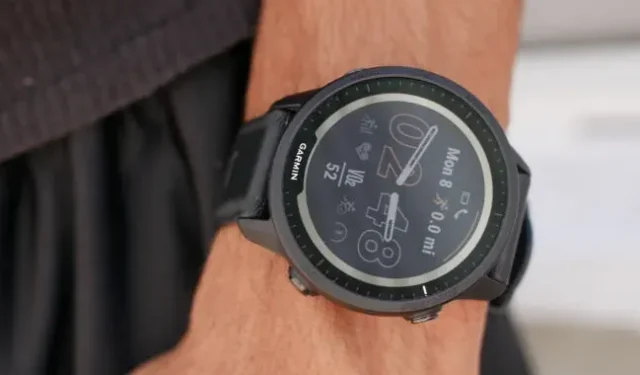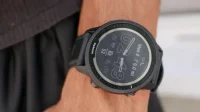The Forerunner 955 continues this tradition. It sits at the top of the Forerunner series as the most feature-packed watch in the group, and this year it’s getting some modern touches like a touch screen and daily exercise readiness assessments (similar to Fitbit’s daily readiness feature, but free for users), and it’s introducing new features not found on any other Garmin watch. This includes the higher-end Fenix watch series, of which the Forerunner 955 is also starting to steal some cues like solar charging options and multi-band GPS.
We’ve been training with the Forerunner 955 for several weeks to see how its latest features improve on the platform we already love, and to determine how wary Garmin should be of Apple or Fitbit catching up.
New touch screen, solar option and multi-band GPS
The design of the Forerunner 955 is similar to the previous 945, but it is the first Forerunner to feature a touchscreen display that can be turned off manually or automatically while running. It’s also the first Forerunner to feature solar charging for an additional $100 charge, and the first to support multi-band GPS. Multi-band GPS provides more accurate location tracking that is more reliable in challenging environments. Previously, this feature was reserved for the most expensive Garmin trackers.
The face of the 955 has grown by a tenth of an inch, widening the display to 1.3mm and allowing a new digitized second hand to run along the edges of the screen. The solar-powered version adds a neat reflective bezel around the dial where it soaks up sunlight to improve battery life. Overall, this makes the watch a little bigger than its predecessors, but it doesn’t stick out of your hand like a Garmin Fenix or Epix watch.
Under the hood, we still have heart rate sensors, blood oxygen monitoring, GPS, and 32GB of memory for music. The Forerunner is rated for water resistance up to 5 ATM and can operate in temperatures from -4°F to 140°F.
Same OS, new touch interactions
Garmin hasn’t changed the aesthetics or mechanics of the OS much, instead focusing on refining and creating new tracking features. I have no complaints about the user interface – they get the job done – but it was nice to see interactive watch faces appear on the platform. It’s not much, but the default watch face has a carousel with quick stats you can view, including VO₂ max, heart rate variability (HRV), training load, and activity minutes.
Garmin’s inexperience with touchscreen interfaces is evident on the Forerunner 955. It’s not immediately intuitive what each icon says, and it would be helpful if you could long-tap on each one to see more information, much like how the watch face complications on the Apple Watch work. We hope that such an extension of the touch-optimized interface will appear in the near future.
New scores and assessments of readiness for learning
Garmin’s strength continues to be free detailed health data and training analysis. The company is many leagues ahead of its competitors in providing performance and performance enhancement features for specific sports (particularly running, but to a lesser extent cycling and swimming).
With the 955, Garmin has improved these metrics for accuracy and added two more key features: Training Ready and Morning Report. Training Readiness uses your sleep history, heart rate variability, stress history (based on HRV), recovery time from last activity, and the Garmin Acute Training Load feature to gauge how ready you are to train each day.


